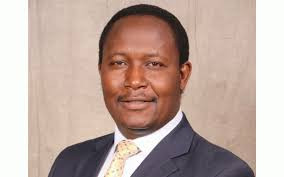
THE recent bull run on the Zimbabwe Stock Exchange (ZSE) buoyed by the continuous rise of forex premiums is not sustainable as it is not backed by fundamentals, local market researchers have warned.
The Zimdollar has been depreciating sharply by over 250% since the beginning of the year to US$1: ZWL$22 055,47. On the parallel forex market, the Zimbabwe dollar has depreciated by about 300% to a current value of US$1: ZWL$40 000.
Resultantly, the market capitalisation on the main bourse has jumped breaching a valuation of ZWL$70,64 trillion by yesterday, a year-to-date increase of 320,18%.
“The exchange rate premium (difference between the official and parallel market rates) is directly correlated to the markets and volume because it represents BOP [balance of payment] and forex reserves. The higher the rate, the higher the reserves and the higher the foreign claims on the central bank,” local market researchers, ZSE Technician, said in its latest analysis of the market.
“If the rate premium is on the rise, markets will be bullish mainly because of the currency undervaluations by the central bank and the inflow of US$ into the formal channels. However, these bull runs are not sustainable because of the listed firms’ exchange rate losses, which later affect their revenue and profitability.”
The depreciation of the local currency is also attributed to an increase in the money supply after Treasury increased expenditure for the current fiscal year.
This expenditure rose by 1 200% to ZWL$60 trillion for the current fiscal year from the 2023 figures.
Amid poor economic growth, this increase in inflationary.
- Chamisa under fire over US$120K donation
- Mavhunga puts DeMbare into Chibuku quarterfinals
- Pension funds bet on Cabora Bassa oilfields
- Councils defy govt fire tender directive
Keep Reading
“Zimbabwe is facing a huge currency crisis under its second hyperinflationary season since the beginning of the 21st century,” ZSE Technician said.
“This can be blamed on an excessive money supply estimated to be 709% in the last 2 years, leading to an estimated ZWL inflation of 1600% by Steve Hanke by the end of February 2024. Since Hanke uses currency movement; his inflation estimates will be around 4 000%.”
The market researchers also noted that the monetary policy announcement might distort the upward curve of the ZSE market capitalisation as it is facilitated by the continuous depreciation of the local currency.
“If you closely follow the ZSE market, you will notice that the shape of the premium cap is correlated with the ZSE total market cap curve. This upward movement is a signal that we are now in another bull run of the year,” ZSE Technician said.
“However, monetary policy and currency announcements can distort economic fundamentals that support the current trend. The total traded value is approximately US$32 million. Allocation of the value shows us market biases and the most liquid asset in the first quarter of 2024,” the report noted.
The researchers said the ZSE was about three times bigger than the forex — only Victoria Falls Stock Exchange (VFEX), yet, on average, the VFEX had a bigger market cap.
As of last week, the VFEX had a market capitalisation of US$1,22 billion compared to the ZSE which, when converted, translated to a valuation of US$3,2 billion.










